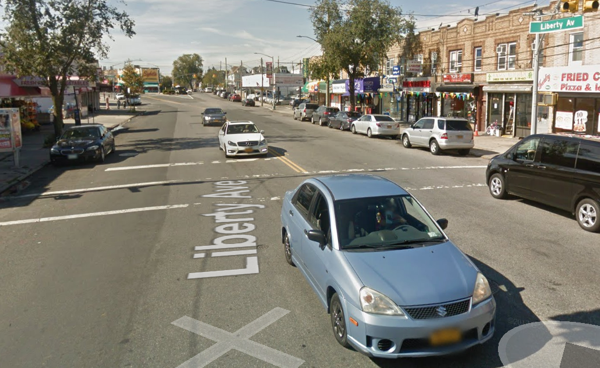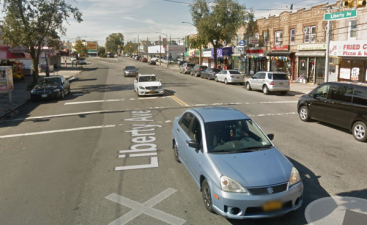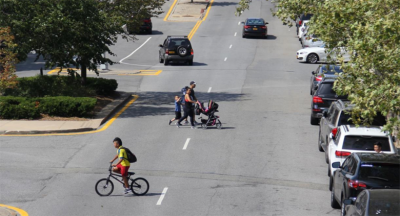DOT Needs More Resources From City Hall to Fix Streets Like Deadly Liberty Ave. in Queens
Six people have died in crashes on Liberty Avenue since 2009. DOT noted hazardous conditions for walking on Liberty in 2015, but didn’t prescribe safety upgrades.

A motorist was arrested last week after fatally striking a senior in a crosswalk on Liberty Avenue in Richmond Hill. With no fewer than six fatal crashes in the last nine years, Liberty is an example of a street that DOT acknowledges is dangerous, but needs additional resources from Mayor de Blasio to fix.
At around 6:14 p.m. on February 7, 70-year-old Toolia Rambarose was crossing Liberty when Kazim Mohammed hit her with a Ford van as he turned left from 135th Street, according to Patch and the Daily News.
Mohammed, 47, was charged with a misdemeanor for violating the victim’s right of way.
Liberty Avenue runs eight miles between Mother Gaston Boulevard in Brooklyn and Farmers Boulevard in Queens. It is served by the A train and the Q83 and Q112 bus lines.
In addition to Rambarose, motorists have killed four people walking on Liberty Avenue since 2009, according to city data. The victims include Rohan Singh, struck by a hit-and-run driver in 2012, and an unnamed male pedestrian killed in 2014. A motor vehicle occupant died in a crash on Liberty in 2013.
DOT noted hazardous conditions for walking on Liberty in the agency’s 2015 Queens pedestrian safety action plan. “Wide streets such as Hillside and Liberty Avenues accommodate heavy vehicular volumes and pose dangers to pedestrians due to especially long crossing distances and high-speed traffic,” read the report.
However, the action plan did not designate Liberty, or any of its intersections, for safety upgrades, presumably because fewer pedestrians are killed and seriously injured per mile on Liberty than on 47 other Queens streets that were singled out for improvements.
After years of pressure from safety advocates, in 2017 Mayor de Blasio announced a significant funding boost for street redesigns. But the vast majority of that funding is designated for capital projects, which means the money won’t go that far. If de Blasio wants to improve safety on every street that DOT knows is dangerous, he’ll need to budget for more redesigns made with low-cost materials that can cover many miles.

